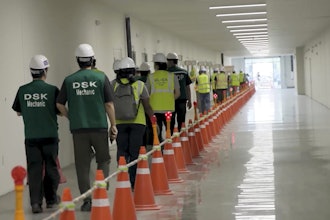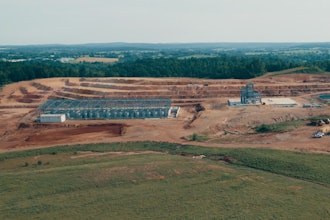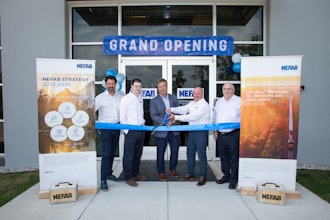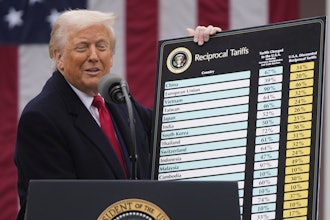FLAGSTAFF, ARIZ. -- A Chicago-based company in negotiations to take over a coal-fired power plant in northern Arizona said it would run the generating station at less than half its existing capacity to ensure it's economical, a company official said Tuesday.
Fewer employees, and a new lease and coal supply agreement also are in the mix as Middle River Power pursues a takeover of the Navajo Generating Station. The current owners of the 2,250-megwatt plant near the Arizona-Utah border are planning to shut it down next year unless someone else buys it, saying power produced by natural gas is cheaper.
Joseph Greco, a senior vice president for Middle River Power, told Arizona utility regulators the company would operate the plant at 44 percent of its capacity, and differently during peak and off-peak demand, making it more economical while ensuring a steady power base. The company offered few other details, citing non-disclosure agreements.
"We believe there is a solution to be made," Greco said.
The power plant sits on the Navajo Nation and is fed by coal jointly owned by the Navajo and Hopi tribes.
Navajo President Russell Begaye has said a lease agreement with Middle River Power and its parent company, New York-based Avenue Capital, could come before tribal lawmakers at their October session. Still, a sale is considered a longshot.
Tuesday's meeting before the Arizona Corporation Commission was meant as an update on the plant's future. The Arizona Corporation Commission doesn't regulate the power plant or its majority owner, the Salt River Project. But it oversees two Arizona utilities that own shares of the power plant, Tucson Electric Power and Arizona Public Service Co.
The Salt River Project said it's been in talks with Middle River Power but couldn't discuss specifics because of a non-disclosure agreement. In the meantime, the utility is working to place employees at the Navajo Generating Station in other jobs at SRP. Deb Scott, senior director of regulatory policy at SRP, said 140 of the 443 employees have left for other jobs, and their previous positions are being filled by contractors.
One of the bigger hurdles for Middle River Power is finding utilities that will buy power from the coal plant.
California and Nevada already are moving away from coal-produced energy. Middle River Power has focused its attention on the Central Arizona Project, which has used the power from the Navajo Generating Station to move water through a canal system to Arizona's most populous areas but has said it can save money buying power on the open market. Middle River says natural gas is too volatile.
The Navajo Generating Station once was predicted to stay open until 2044, and it's unclear how long Middle River would run it if a sale is finalized.
Clark Tenakhongva, vice chairman of the Hopi Tribe, said Tuesday that the tribe needs another five to 10 years to better chart its future. Coal revenue provides about 85 percent of the Hopi Tribe's budget, and thousands of people rely on coal to heat their homes on the Navajo and Hopi reservations.
"If the plant does shut down, that's another part of the headache I'll have to address, how am I going to provide heating to all my people up north?" he said.
Coal and lease payments supply about 22 percent of the Navajo Nation budget.
Nicole Horseherder, a Navajo woman who is advocating for the plant to shut down, said she wanted more answers about Middle River's plans, particularly when it comes to cleaning the site and impacts to tribal members.
"To date, MRP has offered to provide power at competitive prices without a shred of detail on how they will do so or evidence that doing so is even economically feasible," she wrote to utility regulators.





















